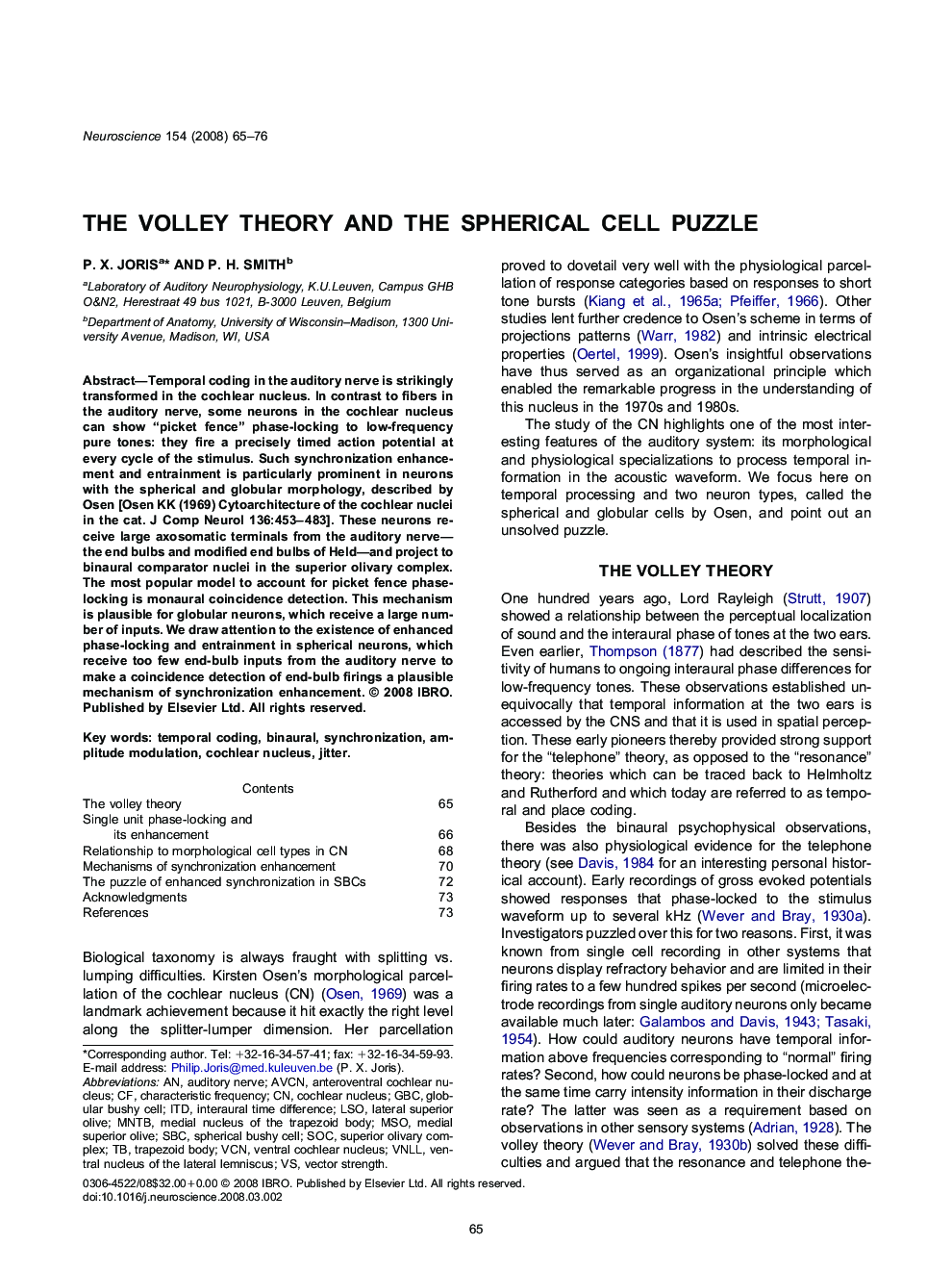| Article ID | Journal | Published Year | Pages | File Type |
|---|---|---|---|---|
| 4340537 | Neuroscience | 2008 | 12 Pages |
Temporal coding in the auditory nerve is strikingly transformed in the cochlear nucleus. In contrast to fibers in the auditory nerve, some neurons in the cochlear nucleus can show “picket fence” phase-locking to low-frequency pure tones: they fire a precisely timed action potential at every cycle of the stimulus. Such synchronization enhancement and entrainment is particularly prominent in neurons with the spherical and globular morphology, described by Osen [Osen KK (1969) Cytoarchitecture of the cochlear nuclei in the cat. J Comp Neurol 136:453–483]. These neurons receive large axosomatic terminals from the auditory nerve—the end bulbs and modified end bulbs of Held—and project to binaural comparator nuclei in the superior olivary complex. The most popular model to account for picket fence phase-locking is monaural coincidence detection. This mechanism is plausible for globular neurons, which receive a large number of inputs. We draw attention to the existence of enhanced phase-locking and entrainment in spherical neurons, which receive too few end-bulb inputs from the auditory nerve to make a coincidence detection of end-bulb firings a plausible mechanism of synchronization enhancement.
